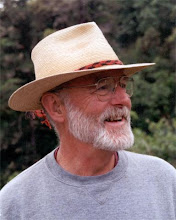Anthropologists began studying this strange activity hundreds of years ago. The phenomenon was so widespread it got a lot of attention and the early field studies make for fascinating reading. I recently read a book about Siberian shamanism, written by a British historian which details the complexity of the subject. There are hundreds of language groups involved and considerable confusion as to how much of that which is observed is original, or copied from other groups, or learned from the observers!
Some anthropologists wrote that it was all showmanship, or acting. Others came away awed by what they saw but with no attempt to explain it. Others placed it into a religious context with which they were more familiar. There was a view that shamans were mentally unbalanced. Drums, rattles, rituals of singing and dancing, and the ingestion of different substances were usually part of their reports and their conclusions as to meaning were diverse. There are some rather consistent geographical differences in the reports. For example, there is “possession shamanism” of the Caribbean and “journey shamanism” of Siberia. There is shamanism in which entheogens play a huge part as in the Upper Amazon and there is shamanism with no entheogen involved, at least as noted by observers.
One of the most widely quoted sources on shamanism is Mircea Eliade and his work deserves a comment because it has been so predominant in the discussion of the phenomenon. Eliade ( 1907 – 1986) was a Romanian historian of religion, fiction writer, philosopher, and professor at the University of Chicago. He was a leading interpreter of religious experience, who established paradigms in religious studies that persist to this day. His book on shamanism is difficult, boring and important because it places the activity into a religious context. Any serious student of shamanism will read Eliade, or at least try to.
Some academics make a clear distinction between shamanism and religion. Others weave it into religious perspective. Is Animism a religion? To me there are striking differences between shamanism and what we call our “state religions.”
So definitely read some of the anthropological accounts, and remember that we are attempting to place our own meanings and language on a practice that predates much of what forms our own beliefs about the world.
Subscribe to:
Post Comments (Atom)

No comments:
Post a Comment
Thank you for your comment. After review it will be posted. This can take up to a day or two.